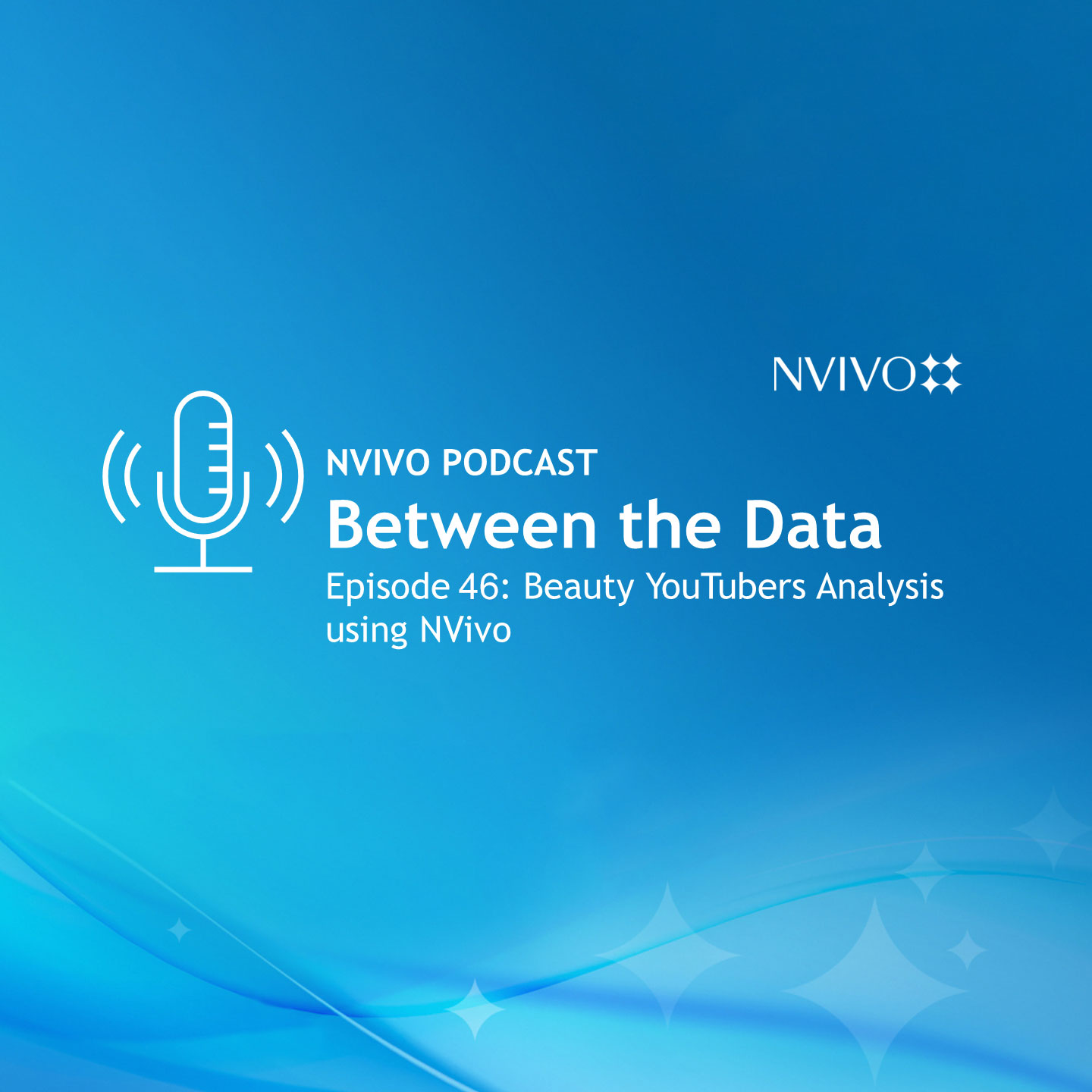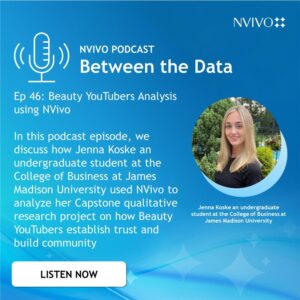
Beauty has long been a topic of interest, from philosophers who struggled to define it to artists who sought to portray it. And now, with an entire industry devoted to products and procedures that claim to enhance it, it is a treasure trove of research with implications for everything from sociology to marketing.
Researchers also have a new avenue for collecting and analyzing data on beauty: social media. That’s where Jenna Koske went for her undergraduate research project for the College of Business at James Madison University. Specifically, she studied beauty YouTubers—individuals who do video makeup tutorials and product reviews on the platform—and how comments on their videos illuminated shifts in gender roles and identity, the effect of parasocial relationships, and the commercial implications of beauty influencers. Dr. Stacy Penna talked to
Ms. Koske about the project for the
46th episode of the Between the Data podcast.
“I knew I wanted to do something within the realm of digital marketing,” said Ms. Koske, explaining how her project aligned with her career goals. In addition, she was interested in exploring how social media impacts our daily lives. Combining the two posed an opportunity to contribute new findings to research.
Focus on Major Beauty Influencers
Ms. Koske chose to focus on three beauty YouTubers with significant followings:
- James Charles, a cisgender man with prominent celebrity and brand collaborations (and a somewhat controversial past).
- NikkiTutorials, a professional makeup artist and transgender woman from the Netherlands who was forced to come out as trans in 2020 after being blackmailed.
- Tati Westbrook, a cisgender woman known for her “life vlogs,” makeup challenges, and very detailed product reviews.
Ms. Koske had a solid background in NVivo already, having helped out her advisor—who wanted to highlight NVivo’s usefulness for undergraduate research—by analyzing papers with the software for demonstration purposes and creating tutorials. For her own project, she used an online bot to scrape the top comments from a selection of the influencers’ most popular videos, which she exported into XML files and then imported into NVivo.
From the top comments for the top 25 videos for each YouTuber, Ms. Koske collected a total of almost 2000 comments. The data included user names, the date it was posted, and the number of up votes and replies as well as the content of the comment. From this, she developed 13 themes and eight attributes.
To compare the prominence of the themes among the three influencers, she used the matrix coding query to count how many times each theme appeared as well as any overlaps and combinations. “This gave me a really good starting point to examine the comments in a more unstructured, qualitative way,” she says.
Key Findings
The themes of “laughter” and “amusement” were often signaled by commenters making jokes, which Ms. Koske calls “indicating that commenters “feel a personal connection with the YouTuber,” a critical component of parasocial relationships.
Tati’s commenters tended to fall into the themes of “desire,” “nostalgia,” and “suggestion.” “A lot of her users really wanted to provide ideas and what content she should post next,” Ms. Koske says.
Comments in her “disbelief” and “makeup compliment” themes were much higher for James and Nikki than for Tati, which led Ms. Koske to question whether their talent and creativity with makeup was more surprising to commenters because James is a man and more impressive because Nikki is transgender. James had the most negative comments, but Nikki had the most positive, which Ms. Koske surmised was related to the overwhelming amount of support Nikki received after revealing her transgender status.
Ms. Koske also noted the different ways the influencers developed trust and community with fans and commenters. Nikki “was all about portraying herself as very genuine and authentic,” she says. Disclosing that she is transgender actually brought her more support. James refers to his followers as “sisters,” which Ms. Koske says he uses in an inclusive sense despite the word’s gendered definition. Tati developed credibility for her objective and straightforward product reviews, which Ms. Koske posits allows her “to walk this line between professionalism and being the big sister maternal figure.”
Implications for the Cosmetics Industry
Ms. Koske’s findings have significance for beauty and cosmetics companies and their marketing efforts. She points out that user-generated content like YouTube videos and comments are valuable sources for target market research on consumer behavior and characteristics as well as pain points. For instance, she noticed commenters on Tati’s videos complaining about a lack of affordable products and not enough diverse shades of foundation—which could help companies identify gaps in the market. James’ popularity could point to a potential customer base for products aimed at men, who she says are starting to care more about hygiene and appearance.
She also found that consumers of cosmetics and other beauty products often view influencers as more trustworthy than ads and other marketing materials. “Companies need to align themselves with someone that they think represents their brand well,” she says.
Ms. Koske’s advice to other undergraduates doing research projects: “Find something that you’re really passionate about.” In this case, Ms. Koske’s interests in social media, gender, and beauty led to her receiving the honor of presenting her research at the National Conference for Undergraduate Research this past April.
Learn more about this research:
Listen to the full podcast episode here.


